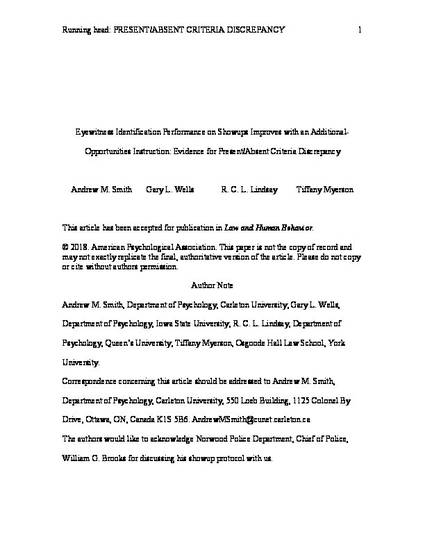
We tested the proposition that when eyewitnesses find it difficult to recognize a suspect (as in a culprit-absent showup), eyewitnesses accept a weaker match to memory for making an identification. We tie this proposition to the basic recognition memory literature, which shows people use lower decision criteria when recognition is made difficult so as to not miss their chance of getting a hit on the target. We randomly assigned participant–witnesses (N = 610) to a condition in which they were told that if they did not believe the suspect was the culprit, they would have additional opportunities to make an identification later (additional-opportunities instruction). We fully crossed this instruction with the standard admonition (i.e., the culprit may or may not be present) and with the presence or absence of the culprit in a showup identification procedure. The standard admonition had no impact on eyewitness decision-making; however, the additional-opportunities instruction reduced innocent-suspect identifications (from 33% to 15%) to a greater extent than culprit identifications (57% to 51%). The additional-opportunities instruction yielded a better tradeoff between culprit and innocent-suspect identifications as indicated by binary logistic regression and receiver operator characteristic (ROC) analyses.
Available at: http://works.bepress.com/gary_wells/3/

©American Psychological Association, 2018. This paper is not the copy of record and may not exactly replicate the authoritative document published in the APA journal. Please do not copy or cite without author's permission. The final article is available, upon publication, at doi:10.1037/lhb0000284. Posted with permission.